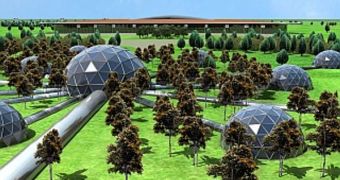After a very long battle with other candidates, Sweden has finally won the honor of hosting Europe's next neutron-science facility, the European Spallation Source. The science complex will be built around a linear particle accelerator, which will accelerate protons to high speeds, and then have them collide into a target, most likely the chemical mercury. Around the main linear device, a number of other laboratories will be built, where independent research projects in various fields will be carried out. For the location of the ESS, three cities “fought:” Lund (Sweden), Bilbao (Spain) and Debrecen (Hungary).
According to the director of ESS Scandinavia, Colin Carlile, the conclusion was achieved last night, in a late-night meeting between research ministers across Europe. Only the UK and Czech Republic abstained from the vote. Switzerland and Italy said they would vote with the majority, and seven of the 12 project “backers” voted for Sweden, including the representatives of France and Germany, Nature News reports. “I feel really very pleased. It's been so long in coming,” the official stated.
“There is sort of a Swedish advantage, but there is not a final decision. My feeling is that there should be very important meetings between all the major players,” said Lazlo Rosta, project director for ESS Hungary and expert at the Budapest Neutron Center. He added that yesterday's vote was only an “opinion” and that the decision was not final. Representatives from the two cities that lost refuse to concede victory to Sweden, and it remains to be seen what the final decision will be.
The ESS, despite lagging behind its American and Japanese counterparts in terms of construction time, will dwarf them. The €1.4 billion (US$2 billion) project will surpass the United States' Spallation Neutron Source, in Oak Ridge, Tennessee, as well as Japan's J-PARC, in Tokaimura. For example, as far as the target material goes, researchers estimate that they will use no less than 20,000 kilograms of mercury during the tests.
The laser generators in the facility will take up between 120 and 150 MW of electrical power to operate at full capacity, and the ESS will most likely be involved in innovation covering various fields, from energy, telecommunications, manufacturing, transportation, and information technology, to biotechnology, and health.

 14 DAY TRIAL //
14 DAY TRIAL //